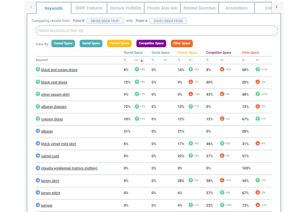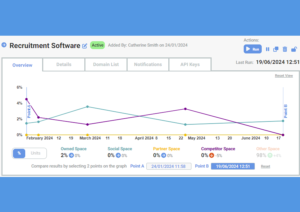We’re always clear that SERPsketch is most definitely not a rank tracking tool. So, with that in mind it’s important to understand that you shouldn’t be importing tens of thousands of keywords into SERPsketch, but rather you should import the most commercially important keywords that you have in your topic clusters. We mean that top subset of keywords that above all others you want to be on page one for.
Right now, SERPsketch doesn’t have a built-in keyword planner so you need to have planned your keywords before you use it.
Knowing which keywords to track in SERPsketch
The first step to knowing which keywords to track in SERPsketch is to conduct a little bit of keyword research to identify the range of terms you could. We recommend you use each product or service area of your business as one campaign sketch, as this will enable you to better interrogate the data and get better insights than if you ran one larger sketch with all of your keywords.
It’s also important that you group your keywords into smaller topic clusters. Say for example you’re a manufacturer of appliances. You won’t want all of your keywords in one group because that would overlap washing machine terms with tumble dryer terms with vacuum cleaner terms and so on. So plan out your topic clusters and the keywords that fit within those.
In SERPsketch, we generally recommend that a campaign has between 25-50 keywords in it. If you’re not sure where to start, here’s a simple process we’d recommend for identifying your initial keywords.
Step 1: Create a seed list
The first step is to create a seed list of the 5 to 10 keywords that you think would matter to the consumer, for example if you’re ASOS and your campaign is going to focus on improving your women’s sportswear offering it might be:
- women’s sportswear
- women’s activewear
- women’s sports leggings
- women’s sports top
- women’s sports clothing
These words should be what you’d use if you were describing the product/service yourself.
Step 2: Expand your list
Next, you want to expand the list by completing some additional research for missed opportunities.
There are a few ways to do this:
In-SERP
A chrome extension like keywordseverywhere will auto suggest other related keywords you should be looking at.
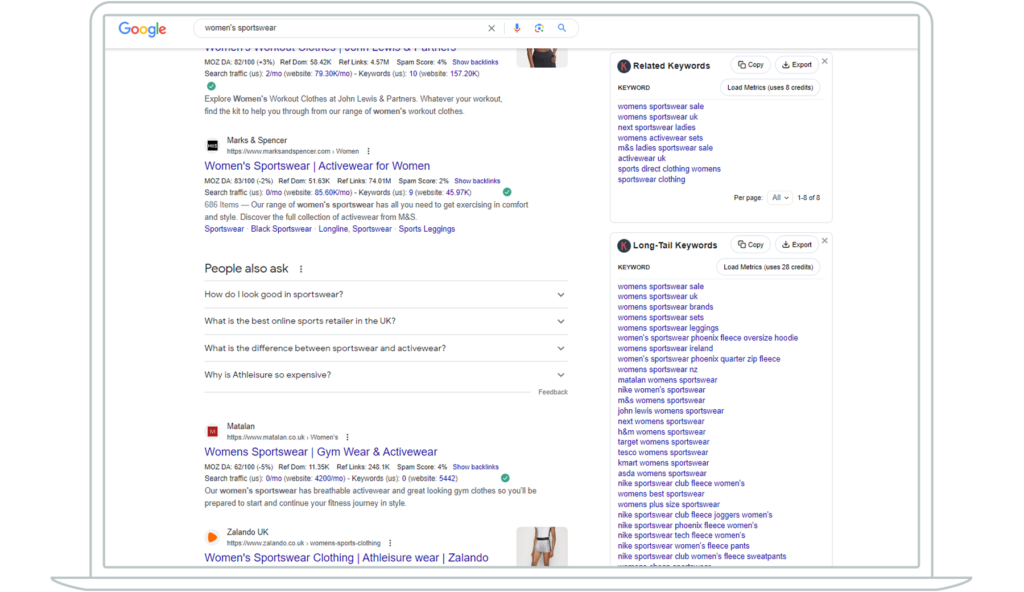
Competitors
If you input competitor domains into tools like Ahrefs or Semrush you can export the keywords which they rank for and then you’d refine this to be specific to their women’s sportswear category.
Look for longtail questions
Tools like alsoasked.com can generate you a list of related questions which can provide you a good list of longtail queries (though unlike SERPsketch, Also Asked doesn’t show how often those questions are appearing on related keywords).
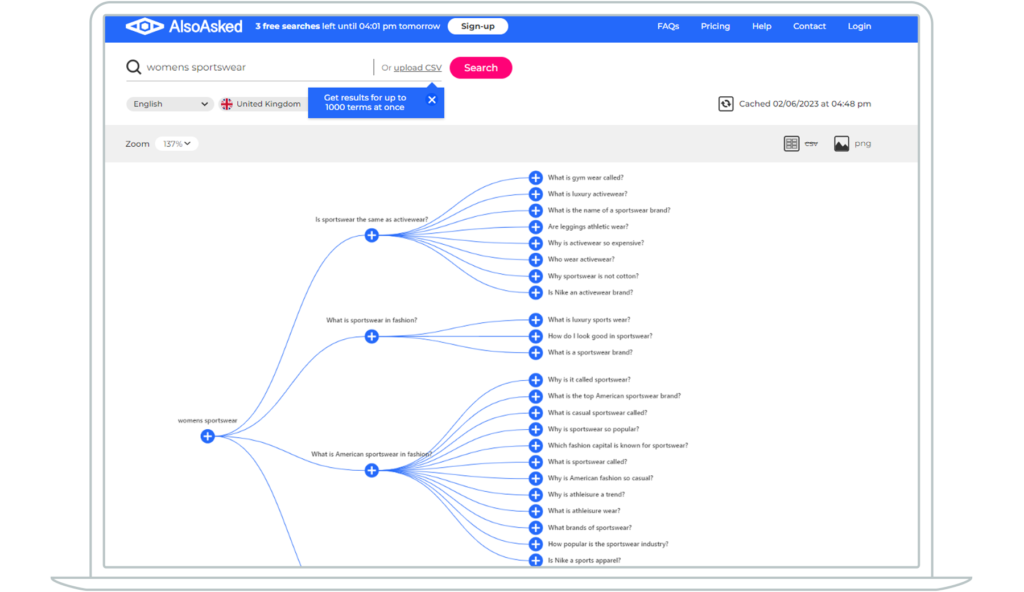
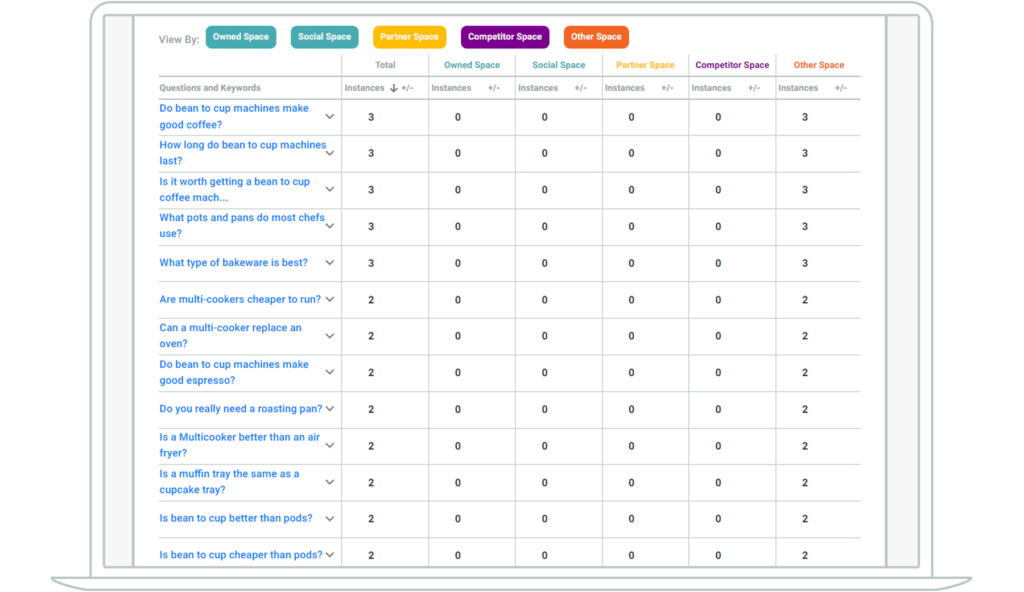
Step 3: Prioritise
Whichever methods you use will leave you with a large list of keywords to refine. Typically at this stage we recommend you put the keyword list into Google Ads to export the search volumes or find search volumes in rank tracking SEO tools like Semrush. Factors to consider are:
Search volume
Commercial terms should be selected primarily on search volume, ensuring you’re ranking for frequently searched terms relative to your domain strength. (So a high authority domain like ASOS could go after a generic term like “women’s sportswear” without an issue, even though it’s super-high volume. A newly launched brand though has no chance because they have little domain authority or strength.)
For long tail terms, search volume will be low, but don’t overrule terms out based on this alone.
For most businesses we recommend a mix of low and high volume terms. Low search volume terms means there aren’t that many people using that specific term on a monthly basis, so the competition for that term is low. High search volume terms are the opposite. There might be thousands of searches for that term on a monthly basis and so you and your competitors will want to aim for organic rank position one, or otherwise capture one of the Google rich feature snippets for that term. A mix of both low and high volume terms gives you the opportunity to win easily on the low volume terms and work to win the higher ones over time.
Current visibility
SERPsketch is most valuable on terms where you are already somewhere on the first page (whether that’s via paid ads or organically) or where your competitors are present on page one as that’s where our insights are focused on and where users’ clicks are.
If you’re just starting out with your search marketing, it’s better to focus on lower volume keywords for quicker wins. Eventually you’ll be more established and can begin to expand out.
If you’ve already got page one visibility for a number of keywords, then stretch yourself by focusing on winning more of the higher volume terms.
Women's Sportswear example
Let’s go through an example of how we’d work through a set of keywords and determine how to narrow down our choice to the most important page one keywords for our brand, those that we want to track in SERPsketch.
Gather your keyword list in a spreadsheet or similar, including search volumes for each keyword, and then in your document, tag each keyword to help you dissect the data further.
For our women’s sportswear keywords, we decided to tag data as follows:
- Generic terms such as “women’s sportswear”, “sportswear for women”
- Sale terms such as “womens sportswear sale”
- Brand terms such as “Next womens sportswear” or “nike sportswear women”
- Specific audience terms such as “women’s plus size sportswear”
- Product specific terms such as “women’s sportswear phoenix fleece oversized hoodie”
- Comparison terms such as “best women’s sportswear”
- Luxury terms such as “designer sportswear women”
- Question terms such as “Is sportswear the same as activewear”
Obviously depending on your own category, you’ll need to determine the best tags for your use.
Next we marked up whether we wanted to include the word in a campaign sketch in SERPsketch and gave the reason why or why not.
Reasons for including a keyword were because
- It’s high volume
- It’s product specific – it’s easier to rank for product specific terms than high volume generics like ‘sportswear’ and there’s also good commercial intent
- It’s audience specific – things like ‘plus size’ are good points of differentiation where there’s less volume in search but it’s a much more qualified, relevant audience if you have the product to offer them
- It’s a branded term for someone you’d be competing against
- It’s informational and relevant – some of the longtail questions show zero volume, but we know people search them, so it’s still worth covering these in some capacity and they help build topical relevance
Reasons for excluding a keyword were because
- It’s mid volume and too generic
- It’s low volume and commercial – this excludes terms with one variation rather than, as can occur with informational searches, terms with lots of similar variations
- It’s low volume and covered by other keywords already
- It’s low volume and irrelevant
Here’s a snapshot of our list or download the full file.
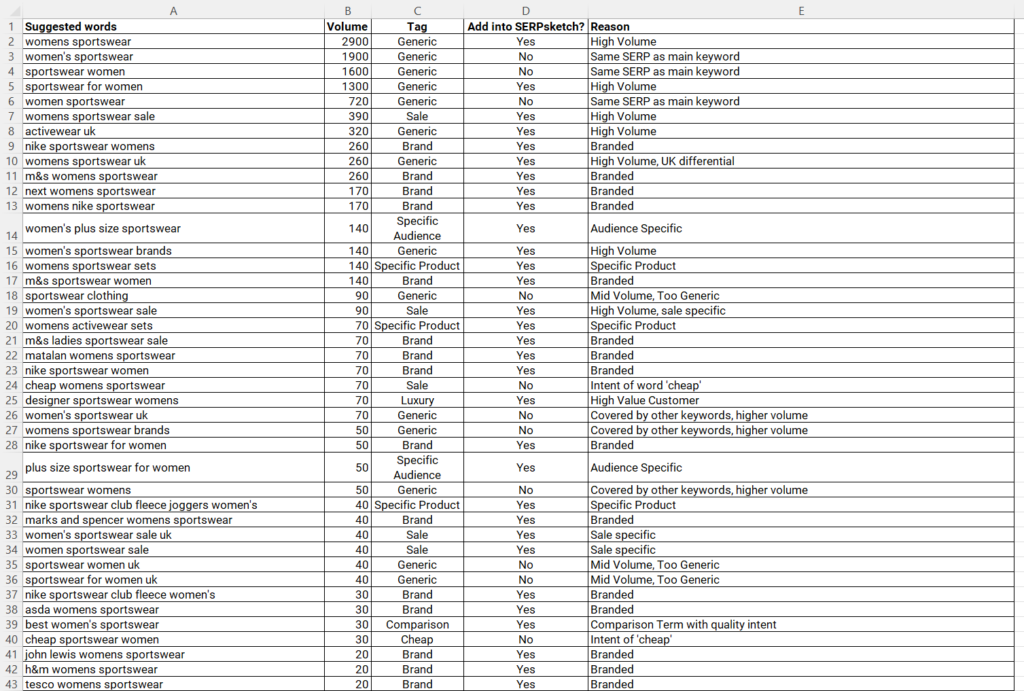
Once you’ve finalised your keywords you can add them to a sketch in SERPsketch and start identify how you and your competitors fare on page one for those important terms.
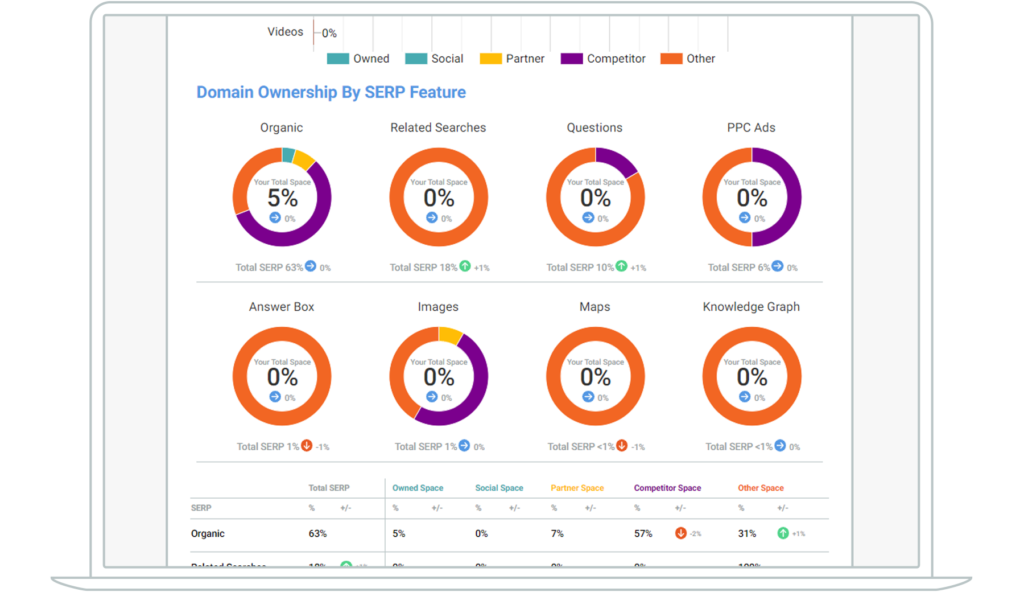
To try out SERPsketch with your own keywords, get a month’s free trial. No credit card required.


